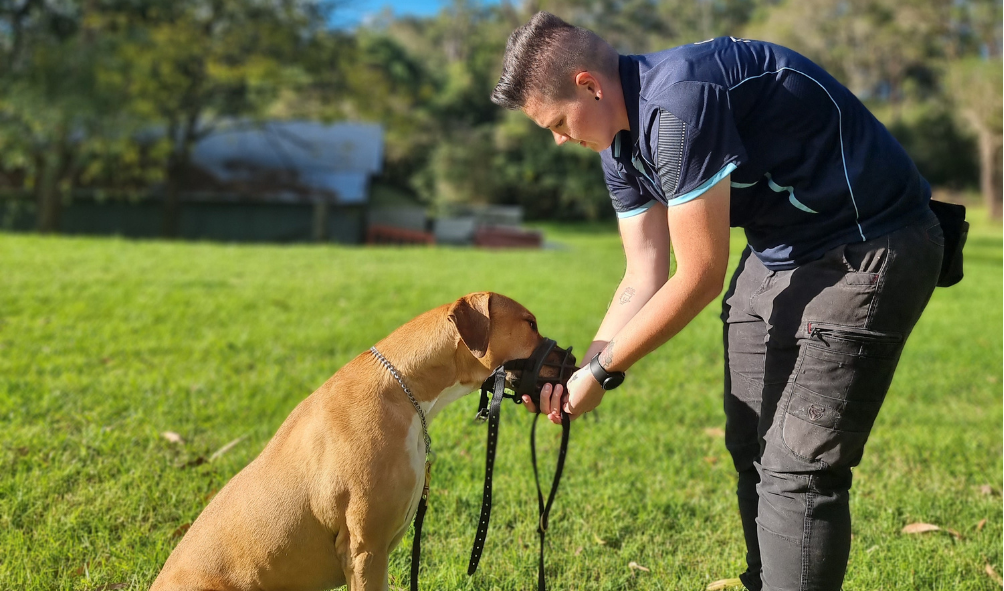Due to the portrayal of muzzles in movies, media, and TV, they often carry a negative connotation, leading people to believe that muzzled dogs are prone to vicious attacks or biting. Unfortunately, this portrayal has caused muzzles to be associated more with discipline than with training.
Regardless of whether you have an aggressive dog or not, it is beneficial to acclimate them to wearing a muzzle. There are numerous situations where muzzles can be helpful or even required, and proactively preparing your dog can significantly impact their response.
Dog muzzles can serve several important purposes in dog training. Here are some reasons why dog muzzle is commonly used:
- Safety: Muzzles provide an added layer of safety, both for the dog and the people around them. They prevent biting or nipping incidents, which can be crucial in situations where the dog may feel anxious, scared, or threatened.
- Control: Muzzles allow handlers to have better control over a dog’s behavior during training sessions. By limiting the dog’s ability to bite or snap, the handler can focus on teaching and reinforcing desired behaviors without the risk of harm.
- Behavior modification: Muzzles can be used as part of a behavior modification program. For example, if a dog has a history of aggression or fear-based reactions, a muzzle can help create a sense of security during training exercises that gradually desensitize and counter-condition the dog to specific triggers.
- Public perception: In certain situations, using a muzzle can help improve public perception and minimize concerns from other people who may be uncomfortable around dogs. This is particularly relevant for dog breeds that are commonly associated with aggression or when training dogs with behavioral issues.
- Veterinarian visits: Many dogs experience anxiety or stress when visiting the veterinarian. A muzzle can prevent unintended bites, allowing veterinary professionals to provide necessary care more safely and effectively.
It is important to note that muzzles should always be used responsibly and in conjunction with positive reinforcement training methods. They should never be used as a substitute for proper training, socialization, or addressing the underlying causes of a dog’s behavioral issues. If you’re considering using a muzzle for your dog, it’s advisable to consult with a professional dog trainer or behaviorist who can guide you on its appropriate use.


